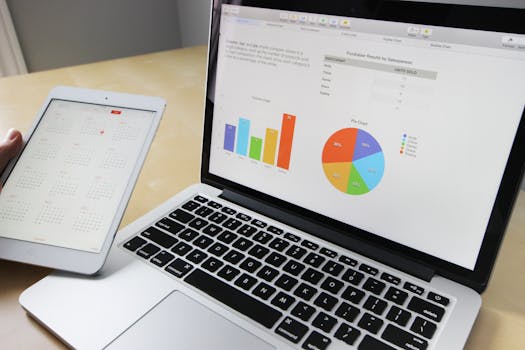Online Media Buying Tools: Simplify Your Digital Ad Purchases
Online advertising has become a crucial part of marketing strategies for businesses of all sizes. As companies dedicate more of their budgets to digital platforms, the need for efficient tools to manage media buying has grown. Online media buying tools simplify ad purchases while ensuring precision and cost-effectiveness. These platforms enable marketers to target audiences effectively, optimize campaigns, and track performance metrics without unnecessary complexity.

Understanding how these tools work and their benefits can help businesses maximize their return on investment in the competitive digital advertising space.
What Are Online Media Buying Tools?
Online media buying tools are software platforms designed to automate and streamline the process of purchasing digital advertising inventory. They allow advertisers to buy ad space across multiple channels, including social media, websites, mobile apps, and streaming services. By centralizing these tasks, advertisers can manage campaigns with greater efficiency and control.
Many tools incorporate programmatic advertising, which uses algorithms to buy ad placements in real-time. This ensures ads reach the right audience at the right time, reducing wasted spend on ineffective impressions. Popular tools include Google Ads Manager, The Trade Desk, and AdRoll.
Beyond ad purchases, these platforms offer features like audience segmentation, budget allocation, A/B testing, and analytics dashboards. Marketers can adjust campaigns in real time based on live data and insights.
Key Features to Look For
When selecting an online media buying tool, consider features that align with your business needs:
- User-Friendly Interface: An intuitive platform ensures ease of use for all experience levels.
- Automation: Automated bidding strategies save time and enhance campaign outcomes.
- Audience Targeting: Advanced segmentation options help businesses reach specific demographics or behaviors.
- Performance Analytics: Real-time data allows for informed adjustments to improve results.
- Cross-Platform Integration: Seamless compatibility with multiple ad networks ensures broader reach.
Evaluating these features can help businesses choose a tool that maximizes efficiency while meeting their marketing objectives.
The Benefits of Using Media Buying Tools
Media buying tools offer advantages beyond convenience. They help businesses stay competitive by leveraging automation and analytics. Key benefits include:
Cost Efficiency: Automated bids and precise targeting reduce unnecessary expenses.
Time Savings: Automation minimizes manual efforts, allowing marketers to focus on strategy.
Improved Targeting: Audience segmentation ensures ads reach users most likely to convert.
Data-Driven Decisions: Performance metrics provide insights for continuous campaign improvement.
Scalability: These platforms support larger campaigns as businesses grow without added complexity.
The Role of Programmatic Advertising
A major component of modern media buying is programmatic advertising. This method uses artificial intelligence (AI) and machine learning (ML) algorithms to purchase ad space in real time through automated bidding.
This approach maximizes efficiency by ensuring every dollar spent targets the most relevant audience segments. If a company wants to reach 18-to-24-year-old smartphone users interested in fitness apps, programmatic tools can identify and purchase ad slots tailored to this demographic within milliseconds.
Programmatic advertising also enhances transparency by providing detailed reports on ad spending. Tools like Adobe Advertising Cloud and SmartyAds specialize in programmatic solutions tailored to various business needs.
The Challenges of Media Buying
Despite their benefits, media buying tools come with challenges. One major concern is brand safety; ads may appear alongside inappropriate content if not carefully managed. To address this risk, many platforms offer brand safety controls that let advertisers blacklist certain sites or categories.
Another issue is ad fraud, where fake impressions or clicks are generated by bots rather than real users. Marketers must use fraud detection technologies integrated into their chosen tools to prevent this.
A final challenge is the learning curve associated with some platforms. While many are user-friendly, others require technical expertise or training before they can be used effectively. Businesses should consider this when selecting a tool.
Selecting the Right Tool for Your Business
The choice of an online media buying tool depends on factors such as business goals, budget size, and technical capabilities. Small businesses may benefit from simplified platforms like Facebook Ads Manager or Google Ads Express, while larger enterprises might prefer advanced solutions like MediaMath or The Trade Desk for scalability and customization options.
A comparative analysis can help in decision-making. Below is a table outlining key attributes of popular platforms:
| Platform | Best For | Key Features |
|---|---|---|
| Google Ads Manager | Small-to-medium businesses | User-friendly interface, robust analytics |
| The Trade Desk | Larger enterprises | Advanced programmatic capabilities |
| AdRoll | E-commerce brands | Cohesive retargeting solutions |
The Future Outlook for Media Buying Tools
The industry continues evolving with advancements in AI, 5G connectivity, and augmented reality (AR). These technologies promise more sophisticated targeting options and creative ad formats tailored to consumer preferences.
Privacy regulations like GDPR are shaping ethical advertising practices that balance user data rights with effective targeting strategies. Sustainability in digital advertising is becoming a focus as companies seek eco-friendly practices without compromising effectiveness.
Final Thoughts
The integration of online media buying tools has transformed digital advertising by automating complex tasks and enhancing targeting precision. Success depends on choosing the right tool that aligns with business needs while addressing challenges such as brand safety and ad fraud prevention.
By staying informed about industry trends and leveraging technology responsibly within regulatory frameworks, advertisers can maximize ROI sustainably while meeting audience expectations in a competitive marketplace.
